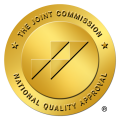Special Needs of the Latino Population in Treatment
Article Contents
Substance Abuse in the Hispanic/Latino Community
Although substance abuse is seldomly discussed publicly, the Latino community requires just as much help as any other group of people.
The term “Latino” or the feminine form of “Latina” refers to people living in the United States with ties to Latin America. Latinos are a fast-growing, major subgroup in the nation. Assistant Professor Scott Akins from Oregon State University states, “Substance abuse increases among recent Hispanic immigrants as they replace their traditional cultural beliefs with those of white Americans…”1
Which Drugs are Commonly Abused in Latino Communities
According to research studies conducted across the United States on Latino communities, the most abused drugs include:2
- Alcohol
- Opioids
- Marijuana
- Cocaine
Why Does This Demographic Abuse Substances
The Latino community is challenged by substance abuse. Although it is important not to generalize the entire community under one idea, it is critical to understand why Latinos, within their respective subgroups, face substance abuse challenges.
Acculturation
Acculturation is the process where a group adjusts into their culture certain social ideas, values, or behavioral patterns of a different culture.
Acculturation has had a major effect on Latinos and drug use as per conducted research. One example of the acculturation process among Latinos in the US is adopting the English Language as the language of choice. This factor is prevalent because National studies consistently found, “…Latinos/as who choose to be interviewed in English are more likely to use and abuse substances than those who request to be interviewed in Spanish.” The desire to be equal to their counterparts introduces the option for drug abuse, despite their values of origin.2
Socioeconomic Factors
Factors such as job type, income, and poverty all link to drug abuse amongst the Latino community. According to a study reported by the National Library of Medicine, having a higher income has been linked to the use of alcohol amongst Latino communities. However, being unemployed is more likely to lead to heavy alcohol or drug dependency.2
How Are They Affected by Substance Abuse
The Latino Demographic, through acculturation or assimilation to the dominant culture, has adopted drug abuse and experienced an increase in substance abuse disorders as well as mental health disorders.
Statistics on Latino Communities and Substance Abuse
- Research showed that co-occurring mood and anxiety disorders were common amongst Latinos and substance abuse in the U.S.2
- Sudies link a relationship between exposure to traumatic events and substance abuse in Latinos.2
- Research shows that approximately 31.9% of whites individuals, 28.1% of African Americans, and 30.1% of Hispanics showed signs of alcohol abuse, drug abuse, or mental health issues.3
- Ninety-twopercent of Latino youth with a SUD did not receive treatment in a specialty facility.4
- Approximately 1.1 million Latino youth abused illicit drugs in the past year.4
Signs and Symptoms of Substance Use Disorder
According to the Mayo Clinic, signs and symptoms of a substance use disorder, or SUD, include:5
- Feeling that you must use the drug regularly — daily or even several times a day.
- Having intense urges for the drug that block out any other thoughts.
- Over time, needing more of the drug to get the same effect.
- Taking larger amounts of the drug over a longer period than intended.
- Making certain that you maintain a supply of the drug.
- Spending money on the drug, even though you can’t afford it.
- Not meeting obligations and work responsibilities, or cutting back on social or recreational activities because of drug use.
- Continuing to use the drug, even though you know it’s causing physical or psychological harm.
- Doing things to get the drug that you normally wouldn’t do, such as stealing.
- Driving or doing other risky activities when you’re under the influence of the drug.
- Spending a good deal of time getting the drug, using the drug, or recovering from the effects of the drug.
- Failing in your attempts to stop using the drug.
- Experiencing withdrawal symptoms when you attempt to stop taking the drug.
Why is Treatment Difficult to Access for Hispanic/Latino Communities?
Treatment for substance use disorders is available to Latino communities. However, there are several challenges in the way of obtaining treatment.
Financial Reasons
Inpatient treatment and outpatient treatment are partially covered by health insurance. The other portion of treatment costs is out-of-pocket. A percentage of the Latino population lacks health insurance coverage. This aspect creates a barrier in receiving treatment for substance use disorders.
No Access to Treatment
Although treatment is accessible, because treatments catered to the Latino community are less common, the resources are more challenging to access.
Language Barriers
For a patient to experience a full recovery, they must be able to engage in sessions and fully understand the concepts discussed in treatment. Thus, understanding the language is an essential part of recovery. With individuals who speak broken English or understand less than 50% of the English language, the barriers are greatly increased, and recovery rates decrease.Fear of Deportation
Deportation is the formal removal of a foreign national from the U.S. for violating immigration law. Because many Latinos fear any kind of surveillance from immigration authorities, they would rather not participate in any recovery process that would require documentation.6
Resistance to Trust Outsiders
The Latino community within families is quite intimate. Trusting anyone outside of the family is interpreted as a possible risk – particularly those of another subgroup. Latinos often prefer an individual who speaks their language and understands their challenges.
What Culturally Competent Care for Latino Communities Looks Like
- Self-knowledge and awareness about one’s own culture.
- Awareness of one’s cultural worldview.
- Experience and knowledge of different cultural practices.
- Positive attitude toward cultural differences.
With many factors and barriers between Latinos and recovery, providers need to familiarize themselves and become culturally competent with the following needs:
Focus on Faith and Spirituality
The Latino culture is strongly grounded on their faith and spirituality. Despite the need for a physical approach, Latinos associate their challenges with that their beliefs. This factor is important to note in the case of treatment.
According to Pew Research, “While most predominant among the foreign born and Spanish speakers, Hispanic-oriented worship is also prevalent among native-born and English-speaking Latinos. That strongly suggests that the phenomenon is not simply a product of immigration or language but that it involves a broader and more lasting form of ethnic identification.”9
Focus on Family
Family, both intimate and extended, are highly valued in the Latino culture. Incorporating family into the recovery process would be beneficial and very supportive of the patient. For example, family therapy or group sessions with a family member present would increase the trust and results of full recovery.
Services Available in Spanish
Treatment options facilitated in Spanish immediately increase the chances of full recovery. Providers should have the option to facilitate treatment in Spanish, or any other native language.
Understanding and Respect
Part of cultural competence is understanding the levels of respect within a particular culture. These forms of respect include how to greet individuals or how to address individuals (young, old, mid-aged, etc.)
Treatment Options for Substance Use Disorder
Treatment for substance use disorders vary, but often include the following options:
Detox
Detox plans and programs are typically the first steps in the recovery process. With detox, the goal is to rid the body of the addictive substance. During the detoxing process, some patients may be monitored by a doctor or medical professional due to the severity of symptoms. If the withdrawal symptoms are severe, patients may also be medically assisted to make detox more bearable.
Inpatient/Outpatient Treatment
Inpatient and outpatient programs offer patients a monitored and clinically supported recovery experience. Inpatient programs incorporate residential check-in facilities with group sessions, individual sessions, environmental escapes, and 24/7 clinical support from trained staff.
Therapies
Therapy is available for patients in the recovery process. Supports such as induvial therapy, group therapy, and family therapy are options that can help a client down the path to recovery.
Resources
https://www.sciencedaily.com/releases/2007/08/070812173257.htm
https://www.ncbi.nlm.nih.gov/pmc/articles/PMC3059600/
https://pubmed.ncbi.nlm.nih.gov/11729020/
https://store.samhsa.gov/sites/default/files/SAMHSA_Digital_Download/PEP20-05-02-002_0.pdf
https://www.mayoclinic.org/diseases-conditions/drug-addiction/symptoms-causes/syc-20365112
https://www.usa.gov/deportation
https://www.humanservicesedu.org/cultural-competency/
https://extension.psu.edu/what-is-cultural-competence-and-how-to-develop-it




